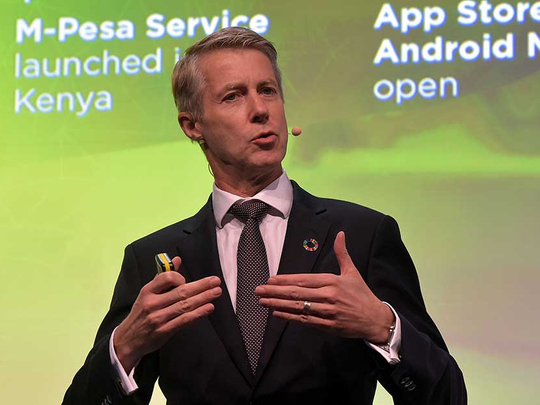
Dubai
Mobile technologies and services generated 4.2 per cent of GDP in the Middle East and North Africa region in 2016, a contribution that amounted to $165 billion (Dh606 billion) of economic value, said Mats Granryd, director general of GSMA.
GSMA is an association of mobile operators and telecom companies devoted to supporting the standardising, deployment and promotion of the GSM mobile phone system.
“In the period to 2020 we expect this to increase to almost $194 billion (4.3 per cent of GDP) as countries benefit from the improvements in productivity and efficiency brought about by increased take-up of mobile services,” he said after unveiling ‘The Mobile Economy Middle East and North Africa 2017’ report.
By mid-2017, he said that there were 365 million unique subscribers across the region, accounting for 63 per cent of the population.
Global subscriber penetration overtook MENA penetration during the course of 2015. As a result, the region has fallen behind Asia Pacific to become the second least penetrated region in the world.
However, he said there is a huge variation between countries in the region, from the advanced Gulf Cooperation Council (GCC) States where 76 per cent of the population on average are mobile subscribers, to some of the other Arab states such as Comoros, Djibouti and Somalia where less than a third of the population subscribes to mobile services.
“Subscriber growth rates will slow further over the next few years due to the more advanced markets approaching saturation, the challenge of growing penetration in the less developed markets, and unstable political and economic conditions in several markets. As a result, subscriber penetration will reach only 65 per cent by 2020, below the global average of 72 per cent.
The report said that subscribers in MENA are increasingly migrating to mobile broadband services, with mobiles playing a crucial role in providing internet access given the general lack of fixed broadband infrastructure in the region.
By the end of 2016, he said that mobile broadband connections reached parity with 2G, and by the end of 2017, 3G will become the dominant mobile technology. By 2020, mobile broadband will account for just under 70 per cent of total connections.
In the region as a whole, he said that total revenue grew by 1.6 per cent in 2016, compared to growth of one per cent in 2015 and a decline of 2.5 per cent in 2014. Revenue is likely to grow as more countries roll out or expand 4G networks and mobile operators continue to monetise the strong growth in data traffic.
“Overall, total revenue is expected to grow by 1.5 per cent in 2017, and by an average annual growth rate of 1.9 per cent between 2017 and 2020,” he said.
As smartphone adoption continues to rise in the region (just under half of total connections were smartphones by mid-2017) and as more users come online, an increasing range of mobile services are being consumed, including video, social media, e-commerce and financial services, he said.
“Mobile has emerged as the platform of choice for creating, distributing and consuming innovative digital solutions and services in MENA, and the region is playing a leading role in certain areas, particularly in Saudi Arabia and the UAE,” he said.
Moreover, he said that mobile operators in the region are also increasingly collaborating with tech start-ups to help scale innovative and sustainable mobile services.










